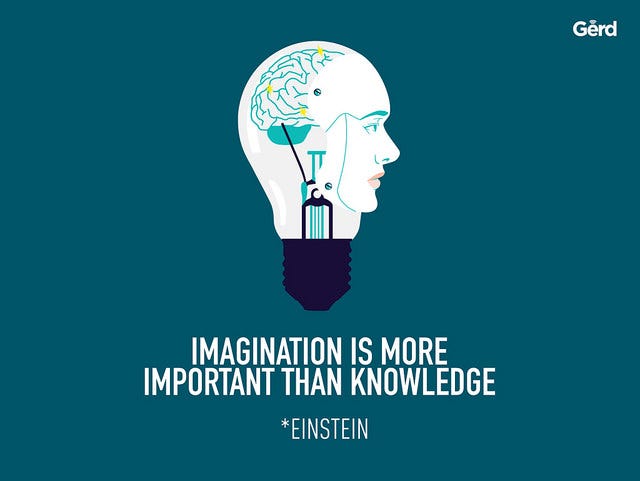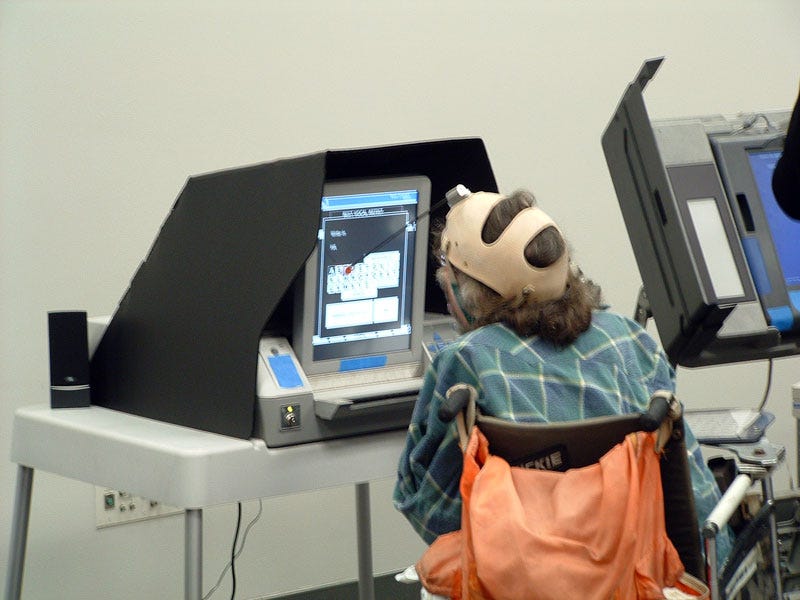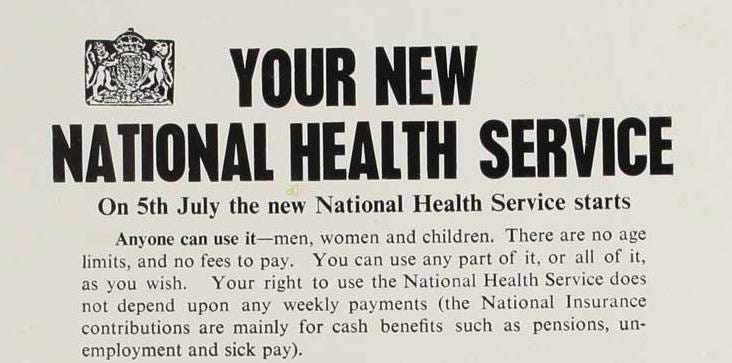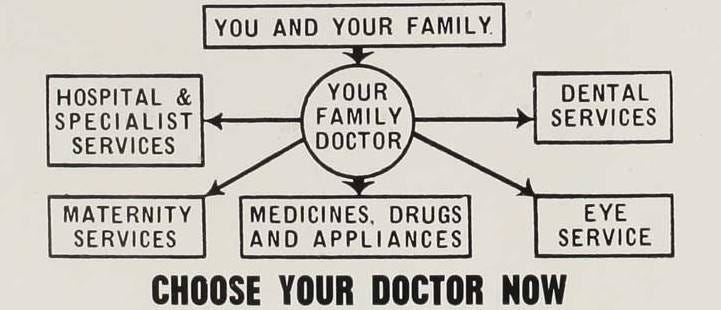Mar 23•6 min read
Digital Health Dreams — how far has the NHS really come?

Of the 90% of the adult UK population who have access to the internet, only 2% interacted digitally with the NHS in 2018.
The astonishing fact that 20% of disabled adults have never used the internet in 2018, is awful and the very group of people who would find it most useful and potentially fulfilling for their lives, are somehow excluded.
A consistently low uptake of people over 75 years old using the internet is worrying. This age group also has the highest relapse rate of not returning to use the internet.
We are an ageing society, so what does this mean? And why is is occurring?
These two groups of people, are often overlooked when we talk about technology or digitally enabled products, which seems strange for healthcare technology, isn’t it these people we are meant to be designing for? As it won’t be long before we are in one, if not both of these groups.

This voter with a manual dexterity disability is making choices on a touchscreen with a head dauber. Copyright:
Designing for the minority and the majority usually find it useful .
The OXO story is testament to this.
So where does this leave the NHS?
To better understand the timeline of how the NHS has progressed through the decades towards this digital and technological transformational utopia that is apparently coming, I decided to jot down from a rough point in time, from the 1970s, to the present day where we were up to. Then added in the release dates of technology and founding dates of big tech companies, to be able to understand where we are going, if we are at all.
**This is more of a personal project and is by no means an exhaustive and extensive list, but a brief and fun overview to gain perspective of time and what technology and businesses within that sphere have been born.
Let us begin…….

1976 the computing policy within the NHS was first reviewed
1976 — Apple is founded
1980 some GPs receive money for digital systems
1983 — Mario Bros (Nintendo) arrives
1986 — The Nintendo arrives in the UK
1989 — The Gameboy appears
1991 — Sonic the Hedgehog for Sega is released
1992 the first NHS IT strategy is developed. Woohoo we’re coming!
1992 — The Super Nintendo is released
1994 — Amazon is founded
1996 — The N64 is released
1997 The Dame Caldicott Review establishes the six principles for handling patient identifiable information.
1997 — Netflix is founded (yes it is that old!)
1998 — Google is founded
1999 — Pokemon arrives in the UK (we haven’t started walking around with our smart phones just yet, catching make believe creatures in flash mobs).
By the mid 2000s, nearly all GP surgeries in England are on a digital system.
Say what?!

2002 , the NPfIT programme is to deliver an Electronic health Record. OK people we are definitely striving ahead to a technologically connected utopia.
2002 — LinkedIn is founded
2004 — Facebook is founded
Some good stuff is being born and advancing our digitally interconnected health world.
2005 — Youtube founded
2006/07 — The Nintendo Wii appears in the UK
2007 — the first iPhone is released
2008 — AirBnB is founded
2010 — Instagram is founded
2011 — Snap Chat is founded
2011, the NPfIT is cancelled at an estimated cost of £10 billion.
2013 — Babylon Health is founded
2014 - The Five Year Way Forward paper is published. Yep we got it covered, we have a plan and a strategy, again.
The Personalised Healthcare 2020 paper is also published. We’re really honing in on this problem, got a plan, check!
2014 — Amazon’s Alexa is released
2015 sees the Interoperability Handbook released. As are the Local digital road maps, which are there to explain the plan to help local trusts bring to life their digital strategy.
2015 — Revolut is founded
2015 — Monzo (originally Mondo) was founded

28,000 people a week open an account with Monzo
2016 - The Wachter Review is published. Ok we got another plan. It does detail specifics:
To build an NHS website (NHS.UK), have a triage service by phone (NHS 111), and try build that NHS apps library thing, again. Oh and we want local areas to be paperless by 2020, paper will be extinct in the NHS, fact. But likely more fiction ; )
2017 — GPatHand (by Babylon Health) starts to provide virtual GP appointments.
2018 the Initial Code of Conduct for Data Driven Healthcare Technology is published, alongside the Innovation Tariff and the Innovation and Technology Payments system.
2018 — Github is bought By Microsoft
2019 sees the release of the NHS Long Term plan, as well as the Topol review which looked at digital transformation within the NHS, with an emphasis on AI.
NHSX is announced, no it isn’t the12th instalment in the X men film series, honest.
The Secretary of State for Health and Social Care asks Health and Social Care workers to use email for all information purposes with patients, service users etc instead of paper.

A typical NHS worker — Copyright
The beloved fax machine will be banned. Exciting stuff……..
The Future and keeping up with the Technological Jones’ .
Can the NHS really compete?
By 2020, the plan is to have a digital first primary care system, new digital GP providers, and an amazing NHS app, plus a virtual service.
2021 and Pagers will be a thing of the past, apparently ;)
But there is hope. It will require a radical change in thinking, culture and leadership plus perseverance.
A top down hierarchical pipeline approach is outdated, just look at that time line above and how disruptive those founding companies have been.
Could TOMglobal be something we should be looking at at a local level to really kick start movement of uptake and awareness?
What do you think we need to get the NHS truly working at its best and with technology or products that can help and not just another piece of software to use?
What are your thoughts?
**Bits and bobs:
If you’d like to find out more about how some of those big tech companies were founded, their stories, which are really interesting and inspiring, and some golden nuggets of info around mistakes and failures do check out the following podcasts on either Android or iTunes:
